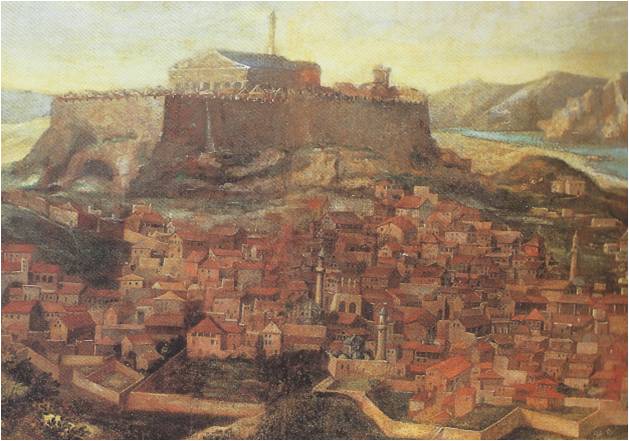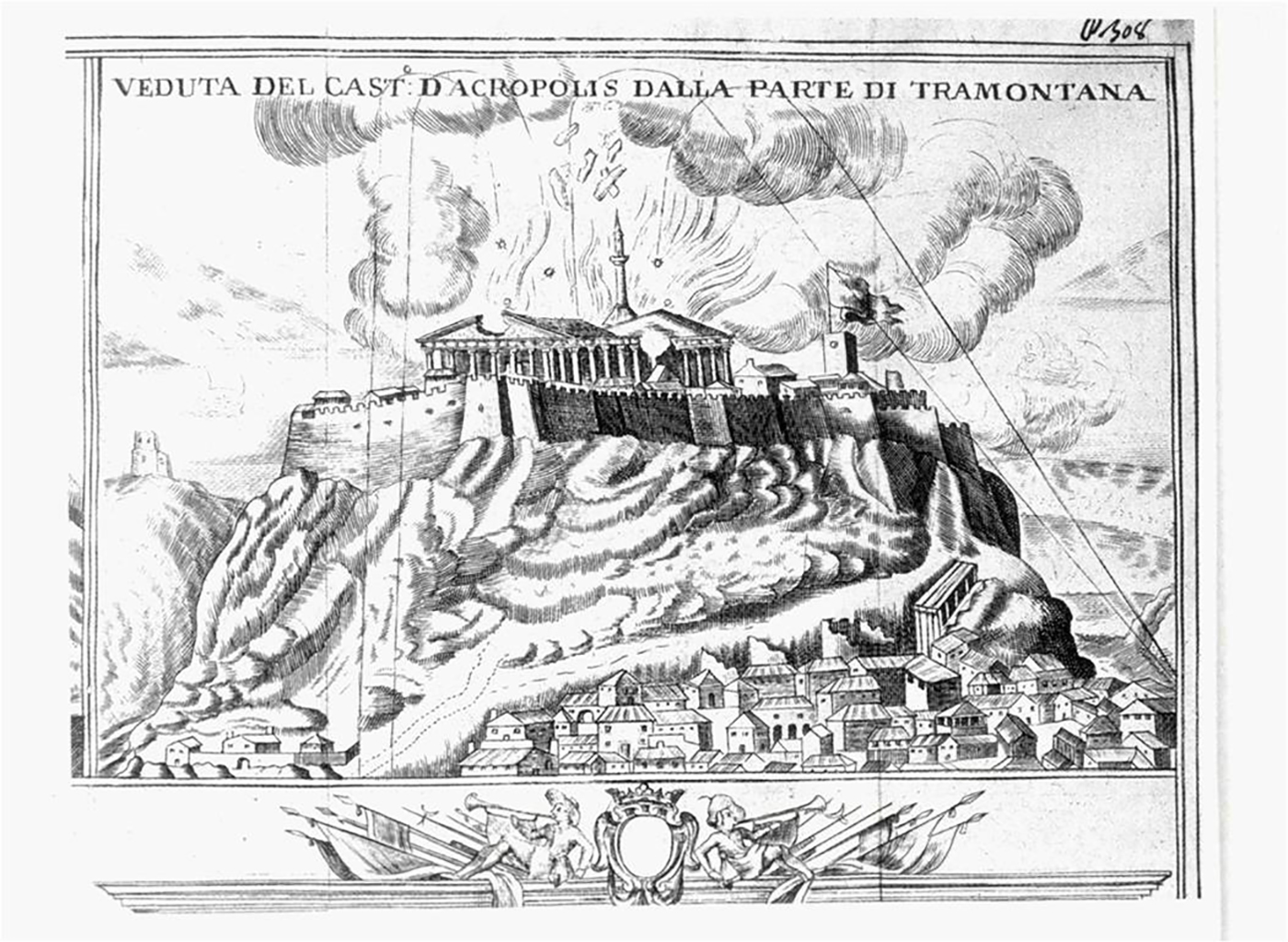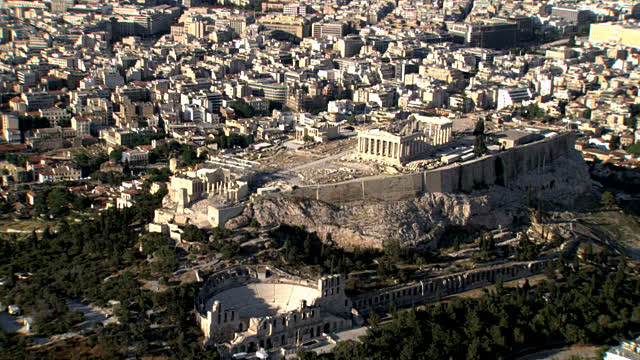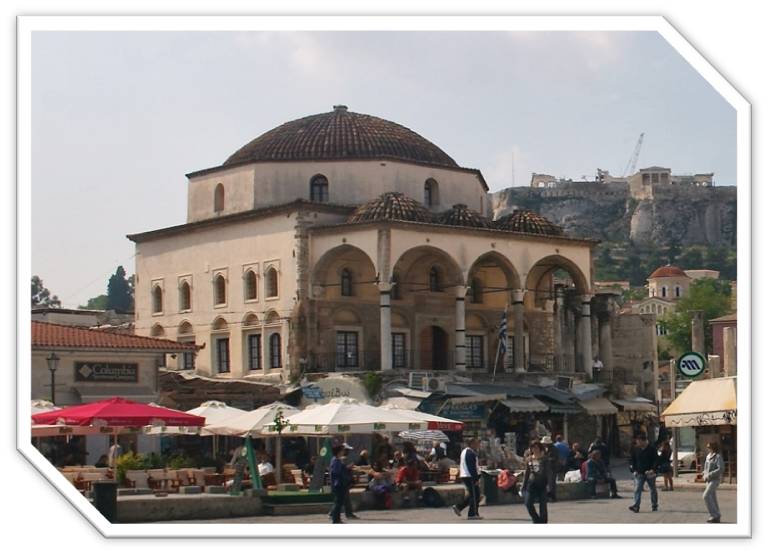Shift from Christian to Muslim Architecture

Athens in 1674 – Minaret Visible behind the Parthenon and Throughout the City
(source: Karapanou 2004, 24; Jacques Carrey, Oil Painting)
The Early Days of the Ottomans (1456-1687)
After the Turkish conquest, two Athenian churches were converted into mosques, changing the city’s skyline. The most notable change is the mosque on the Parthenon. This has a double significance: it was a symbolic sign of the Turkish domination, as well as a reference to the placement of the Turkish garrison in this building.
This period ended with the Venetian Siege of Athens (1687), during which the Parthenon was destroyed.
In the period between 1204 and 1456 (with the Ottoman conquest), building activities in Athens fell back to very few. Even so, to accommodate the Catholic elite in Athens at the time, the Parthenon church is converted to a Catholic church. Of course, while perhaps building was one of the activities of lesser importance in Athens, many other events were taking place in Greece and the rest of the Mediterranean world. With the rise of the Arabic Caliphates, much was changing.
This culminated of course in the eventual fall of Constantinople in 1453 AD, and a few years later, the Turkish conquest of Athens as well.

The Destruction of the Parthenon in 1687
In 1687, the Parthenon was used as munitions store and got hit by a cannonball, the entire roof and most of the inner structure were destroyed in the blast.
(http://pretzler.net/blog/wp-content/uploads/2011/10/Parthenon_explosion-of-1687_smaller.jpg)
The Age of Minarets (1688-1832)
During the 17th century, there seems to have been a big boom in the building of mosques. They are distributed over a large part of the city. This can be seen as a larger degree of integration between the Turks and the Greeks, or otherwise as a growing need to keep the Greek population under control.


Modern aerial photograph of the acropolis seen from above. All post-classical elements have been removed in order to expose the ‘greatness’ of the Athenian Republic and help forget the turmoil of the foreign domination.
The Tzistarakis mosque. It is nowadays a museum. It once had a minaret but it has been demolished since.
<
>